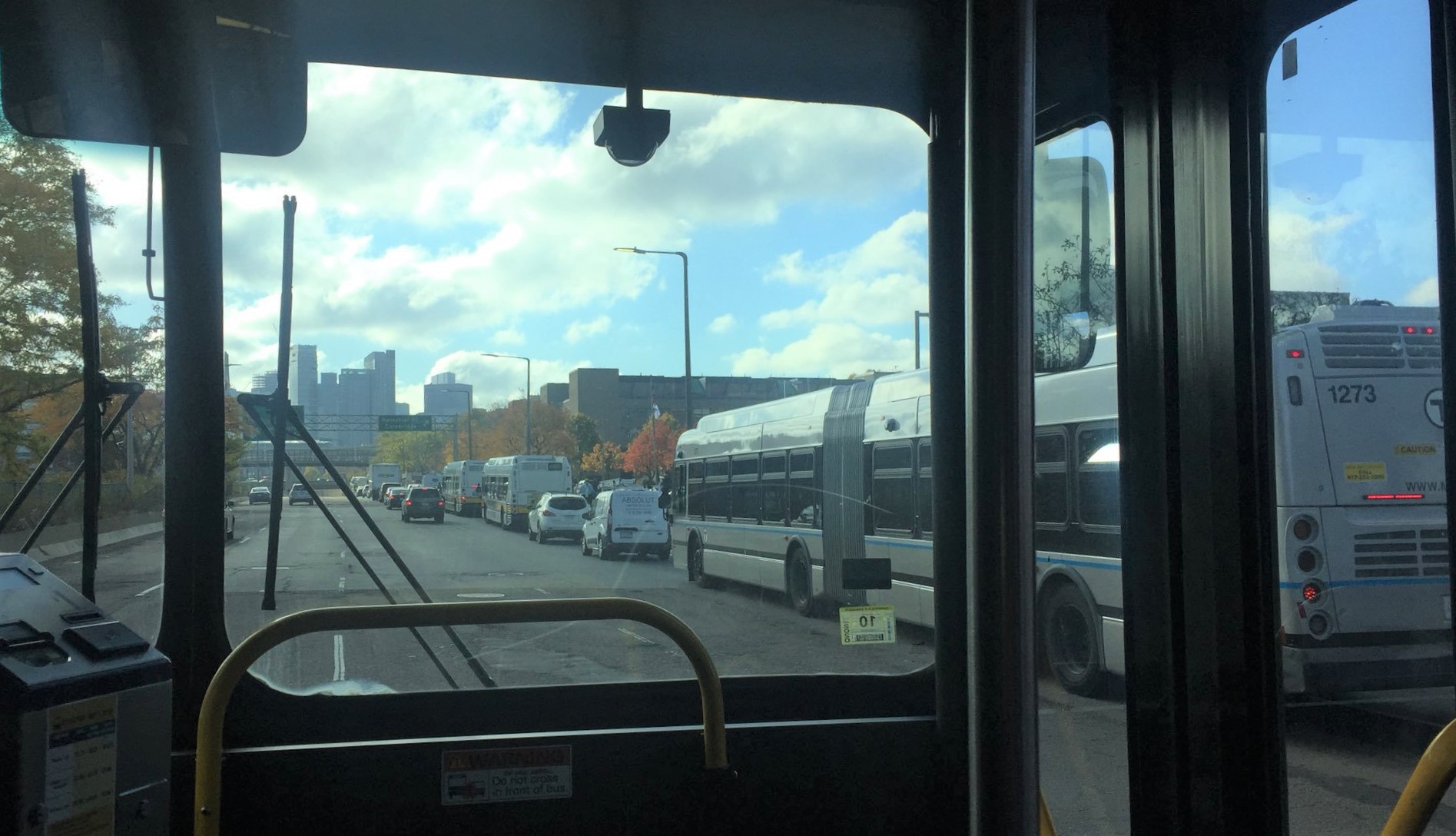This Monday, for the second time this year, commuters woke up to the unexpected rush-hour closure of a subway line after delays to weekend track work kept the Orange Line's downtown tunnel closed well into Monday afternoon.
The T diverted riders onto shuttle buses running between Sullivan Square and Haymarket, and asked riders to crowd into overstuffed Green Line trains through downtown.
As with the Red Line derailment earlier this summer, commuters found themselves on packed shuttle buses stuck in rush-hour traffic and in over-stuffed trains on the routes that were still working. And most of those shuttle buses had to be diverted from their usual routes, leaving rush-hour bus riders delayed throughout other parts of the city.
#MBTA #OrangeLine: No train service between Sullivan & Tufts due to the late completion of weekend work. Buses are being provided between Sullivan & Haymarket. Green Line available between Haymarket & Copley (to Back Bay). pic.twitter.com/xh7oBjeybH
— MBTA (@MBTA) October 21, 2019
If there was one silver lining to the incident, it was the fact that the City of Boston had established a new bus lane on North Washington Avenue just weeks previously, giving shuttles a (generally) smooth ride on a street that would otherwise have been clogged with traffic on the final leg of their routes to Haymarket Station.
But even there, a lack of enforcement on the bus lane sometimes caused unneccessary delay to hundreds of bus riders:
In a column in today's Commonwealth Magazine, former state secretary of transportation Jim Aloisi notes that unusually disruptive incidents like these are likely to recur, and that "it is unconscionable for the MBTA and the municipalities of Greater Boston’s inner urban core to not have in place effective rapid response protocols for moving T riders with priority during subway shutdown emergencies."
StreetsblogMASS reached out to the City of Boston and the MBTA to ask if, in fact, there are emergency traffic management protocols in place to cope with unexpected subway closures, what those protocols are, and who's in charge of enforcing bus lanes like the one on North Washington Street.
In an email message, MBTA spokesperson Lisa Battiston provided details of the MBTA's current protocols, and how the agency is continuing to work with the city to improve their coordinated responses.
"Internal protocols are in place for how many shuttle vehicles are required; what routing should be used; and where to position supervisory staff depending on the location and line that has to be bridged with shuttle buses. Those initial protocols are adjusted based upon the specific circumstances," wrote Battiston.
"Bus dispatchers immediately begin identifying the specific resources that will be sent to assist... The next step is to reach out to our partners at Transit Police to request assistance with traffic and/or crowds at specific locations. Depending on the size, timing, and location of the shuttle, we also will reach out to the City of Boston and/or other jurisdictions to apprise them of the situation and request assistance where needed."
City of Boston officials confirmed on Tuesday that the MBTA notified the Boston Transportation Department (BTD) of the Orange Line closure shortly after 6:30 a.m. on Monday, and that personnel from both the BTD and Boston Police were dispatched to monitor the North Washington Street bus lane during the rush hour.
Battison reported that the City and MBTA additionally implemented a temporary northbound bus lane on North Washington Street during Monday's incident, and that MassDOT delayed a planned lane reduction on the North Washington Street Bridge construction project, and that Transit Police were dispatched to direct traffic and prioritize bus shuttles at Haymarket and Sullivan Stations.
But both City of Boston and MBTA officials report that there are jurisdictional limits to who can enforce illegal parking in bus lanes. Both local police and the MBTA's Transit Police can issue citations for people driving or standing in a bus lane, in order to enforce the City of Boston's local ordinances.
State law explicitly prohibits the MBTA from issuing parking tickets in any public street: enforcement for illegal parking or commercial loading in bus lanes remains squarely the responsibility of local law enforcement officers.
The City of Boston and MBTA have formed a working group to discuss and improve enforcement of bus lanes, and had an initial meeting on October 10th, according to City of Boston officials.
MBTA spokesperson Battison says that the transit agency aims to improve its coordination with the city on implementation of temporary bus lanes, traffic operations and communications for incidents like these.
"We have been working with the City more closely since the Red Line derailment and expect to do so more in the future," says Battison.






